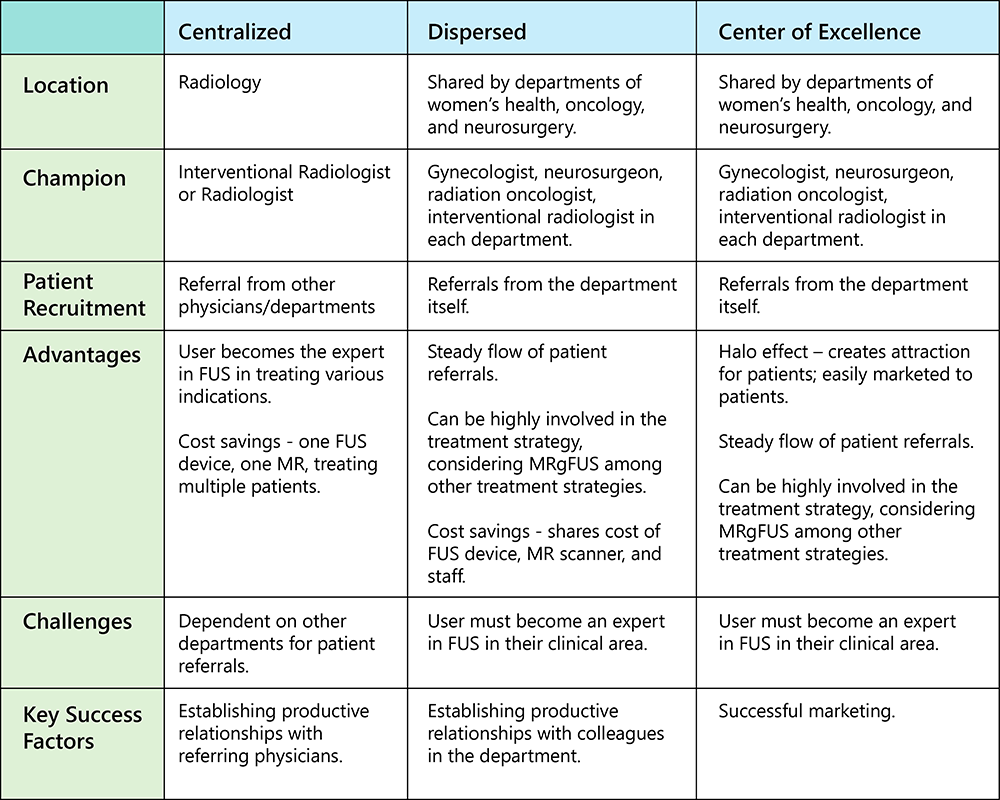The Next Generation Operating Room
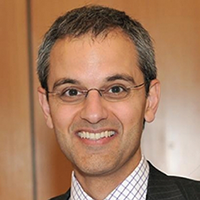 By Pejman Ghanouni, MD, PhD, Assistant Professor, Department of Radiology, Stanford University School of Medicine (December 2015)
By Pejman Ghanouni, MD, PhD, Assistant Professor, Department of Radiology, Stanford University School of Medicine (December 2015)
Focused ultrasound is a disruptive technology. It is changing paradigms because it:
1. Offers an alternative to currently standard treatment options, such as surgery or radiation.
2. Requires new sets of skills that surgeons and other clinicians currently may not have.
3. Presents a challenge with regard to referrals from traditional patient providers, requiring outreach and incentives.
4. Opens the door to focused ultrasound practitioners to provide new therapies.
There is a challenge in building and creating a space for this new technology. The models that have emerged thus far are centralized, dispersed, and center of excellence.
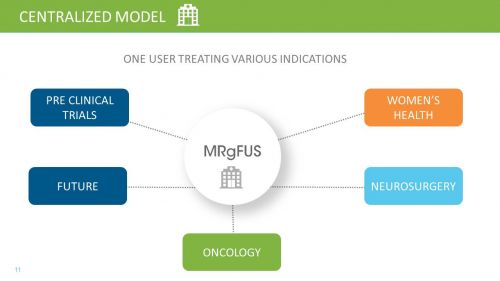 The centralized model has a shared system that is used by various clinical departments for individual patient care, including for clinical trials. For example, at Stanford University, I am the central physician who performs focused ultrasound treatments, in collaboration with other physicians who are experts in the individual clinical condition being treated. The advantage of the Stanford model is that the technology has a champion who is an expert user and who is capable of using focused ultrasound for current and new applications. At this early stage, the champion acts to encourage other physicians, through clinical and academic research collaborations, to consider using something other than the standard technologies. These collaborations form the basis for patient referrals to establish a robust clinical service. Eventually that one champion needs to train others, so they are not the only one at the institution who is invested. The current core team at Stanford includes the treating radiologist, an MR/ultrasound physicist, an MR technologist, an anesthesiologist, and a nurse. Specialty-based teammates are needed to optimize treatment based on their advanced understanding of the disease; these colleagues currently include neurosurgeons, neurologists, gynecologists, medical and radiation oncologists, urologists, and orthopedic surgeons.
The centralized model has a shared system that is used by various clinical departments for individual patient care, including for clinical trials. For example, at Stanford University, I am the central physician who performs focused ultrasound treatments, in collaboration with other physicians who are experts in the individual clinical condition being treated. The advantage of the Stanford model is that the technology has a champion who is an expert user and who is capable of using focused ultrasound for current and new applications. At this early stage, the champion acts to encourage other physicians, through clinical and academic research collaborations, to consider using something other than the standard technologies. These collaborations form the basis for patient referrals to establish a robust clinical service. Eventually that one champion needs to train others, so they are not the only one at the institution who is invested. The current core team at Stanford includes the treating radiologist, an MR/ultrasound physicist, an MR technologist, an anesthesiologist, and a nurse. Specialty-based teammates are needed to optimize treatment based on their advanced understanding of the disease; these colleagues currently include neurosurgeons, neurologists, gynecologists, medical and radiation oncologists, urologists, and orthopedic surgeons.
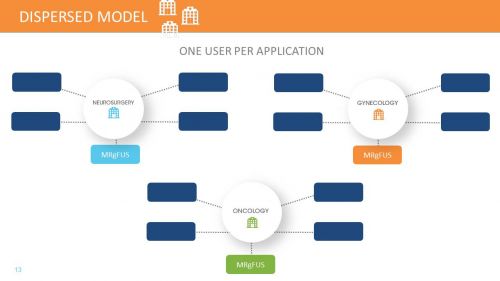 In a dispersed, clinician-specific model, departments share access to a system or manage their own system. For example, at the University of Virginia, a neurosurgeon does the transcranial focused ultrasound, an interventional radiologist treats patients with uterine fibroids, and a radiation oncologist treats patients with painful bone metastases. Each specialty conducts its own clinical trials. This approach has the advantage of allowing ready access to patients, since the clinician offering focused ultrasound is also typically directly managing the patients. Each clinician needs to develop the expertise to use the technology for a particular application; this requires consistent departmental support, since these clinicians and surgeons have other pre-existing demands on their time. For example, the neurosurgeon trained in deep brain stimulation must be motivated to now become an expert in transcranial focused ultrasound, or the interventional radiologist capable of percutaneous ablation of an osseous metastasis must be given the time and direction to learn to apply focused ultrasound for the care of these patients.
In a dispersed, clinician-specific model, departments share access to a system or manage their own system. For example, at the University of Virginia, a neurosurgeon does the transcranial focused ultrasound, an interventional radiologist treats patients with uterine fibroids, and a radiation oncologist treats patients with painful bone metastases. Each specialty conducts its own clinical trials. This approach has the advantage of allowing ready access to patients, since the clinician offering focused ultrasound is also typically directly managing the patients. Each clinician needs to develop the expertise to use the technology for a particular application; this requires consistent departmental support, since these clinicians and surgeons have other pre-existing demands on their time. For example, the neurosurgeon trained in deep brain stimulation must be motivated to now become an expert in transcranial focused ultrasound, or the interventional radiologist capable of percutaneous ablation of an osseous metastasis must be given the time and direction to learn to apply focused ultrasound for the care of these patients.
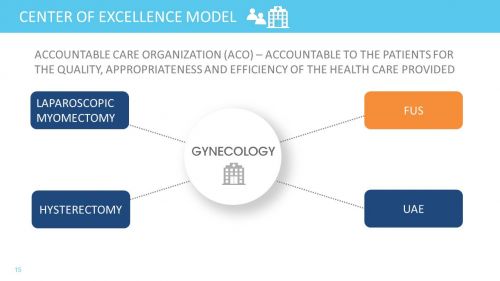 A Center of Excellence model incorporates focused ultrasound into a myriad of choices that are offered to patients for a given medical condition. This approach combines the best of the above models when focused ultrasound is incorporated into the treatment options considered for each patient. At Stanford Hospital, for example, our Fibroid Center is a collaboration between Gynecology, Interventional Radiology, and Body MRI Radiology. Patients with symptomatic uterine fibroids are seen by representatives of each of these disciplines together, allowing individualized care for each patient, in which every treatment option is considered in the context of the patient’s symptoms, physical exam, pelvic MR imaging, and clinical goals. This model also fosters academic productivity, with physicians across disciplines together pursuing research grants, presenting at a broad range of conferences, and sharing publications.
A Center of Excellence model incorporates focused ultrasound into a myriad of choices that are offered to patients for a given medical condition. This approach combines the best of the above models when focused ultrasound is incorporated into the treatment options considered for each patient. At Stanford Hospital, for example, our Fibroid Center is a collaboration between Gynecology, Interventional Radiology, and Body MRI Radiology. Patients with symptomatic uterine fibroids are seen by representatives of each of these disciplines together, allowing individualized care for each patient, in which every treatment option is considered in the context of the patient’s symptoms, physical exam, pelvic MR imaging, and clinical goals. This model also fosters academic productivity, with physicians across disciplines together pursuing research grants, presenting at a broad range of conferences, and sharing publications.
Comparison table for each model:
